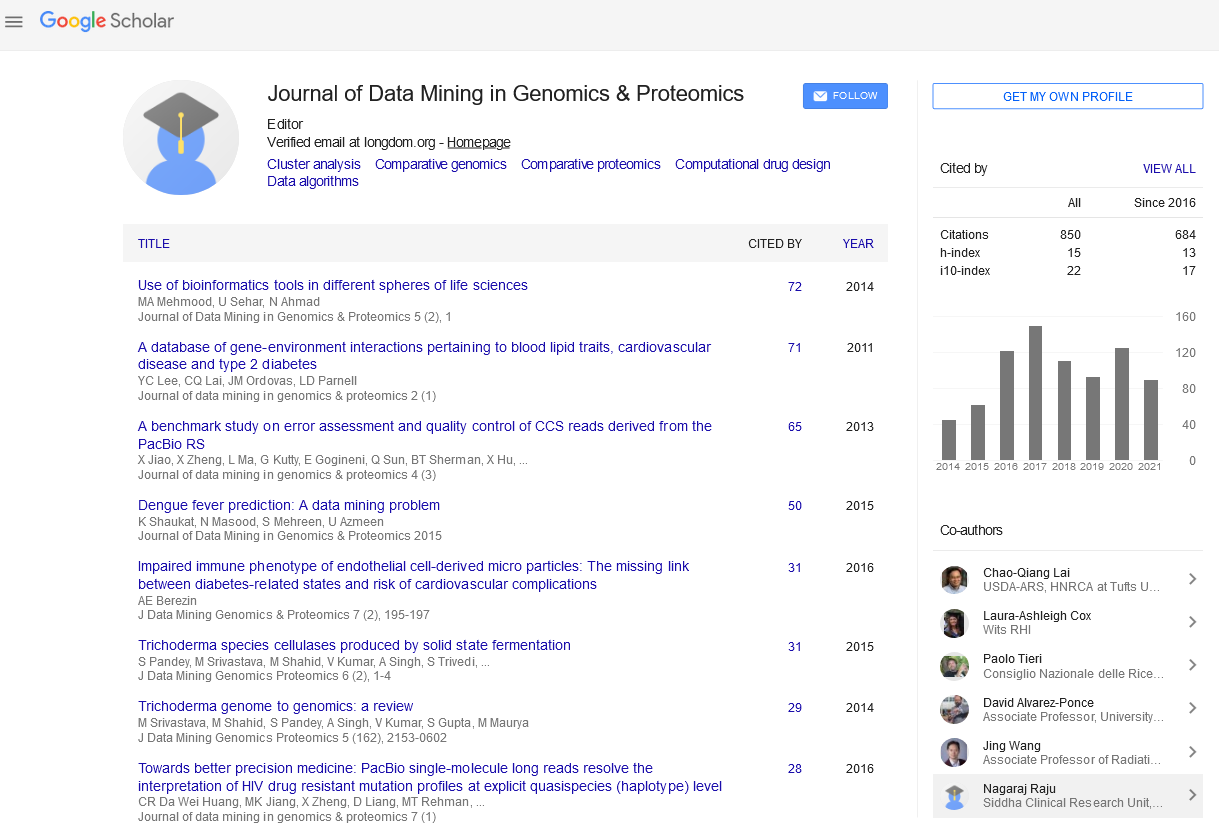PMC/PubMed Indexed Articles
Indexed In
- Academic Journals Database
- Open J Gate
- Genamics JournalSeek
- JournalTOCs
- ResearchBible
- Ulrich's Periodicals Directory
- Electronic Journals Library
- RefSeek
- Hamdard University
- EBSCO A-Z
- OCLC- WorldCat
- Scholarsteer
- SWB online catalog
- Virtual Library of Biology (vifabio)
- Publons
- MIAR
- Geneva Foundation for Medical Education and Research
- Euro Pub
- Google Scholar
Useful Links
Share This Page
Journal Flyer

Open Access Journals
- Agri and Aquaculture
- Biochemistry
- Bioinformatics & Systems Biology
- Business & Management
- Chemistry
- Clinical Sciences
- Engineering
- Food & Nutrition
- General Science
- Genetics & Molecular Biology
- Immunology & Microbiology
- Medical Sciences
- Neuroscience & Psychology
- Nursing & Health Care
- Pharmaceutical Sciences
Genetic analysis and replication of QTL effects on chicken body weight using a multi-locus introgression line
2nd International Conference on Big Data Analysis and Data Mining
November 30-December 01, 2015 San Antonio, USA
Muhammad Ahsan, Weronica E. K, Stefan Marklund, Mats Pettersson, Ashok Ragavendran, Paul Siegel, William Muir and Orjan Carlborg
Swedish University of Agricultural Sciences, Sweden
Purdue University, USA
Virginia Polytechnic Institute and State University, USA
Posters-Accepted Abstracts: J Data Mining Genomics Proteomics
Abstract:
Quantitative trait loci (QTL) mapping is a useful initial step to dissect the genetic architecture of complex biological traits. Intercrosses between divergently selected lines of animals is a powerful approach to map loci that affect such traits individually or through interactions. The drawback is with the approach is a low mapping resolution and consequently further fine mapping is needed for detailed studies of the mapped loci. We have earlier mapped a network of four interacting loci that through reciprocal epistatic capacitation explains nearly half of the difference in body weight between the Virginia high weight selected (HWS) and Low weight selected (LWS) chicken lines that after 50 generations display a 12-fold difference in weight at 56 days of age. The network has been replicated and fine-mapped in an eight-generation Advance intercross line (AIL) and its large effect on weight confirmed. A three-locus introgression line has been bred, where the LWS haplotypes at the three loci in the network with the strongest effects on weight have been simultaneously introgressed into the HWS background. Here we describe the first results from a haplotype-based association analysis in this multi-locus introgression line that again replicate the effects of the introgressed loci on body-weight in the Virginia chicken lines, but also indicate an allelic heterogeneity at the loci within the founder-lines. Further analyses are in progress to evaluate the epistatic effects of the loci in this population as well as the functional contribution of the allelic heterogeneity.
Biography :
Muhammad Ahsan is currently a Ph.D. student in Bioinformatics and Computational Biology at Swedish University of Agricultural Sciences, Uppsala. He completed his Masters degree in Biology/Bioinformatics also from the same university. He also holds a Master’s degree in Computer Science and a Bachelor’s degree in Animal Husbandry both from the University of Agriculture, Faisalabad, Pakistan.


